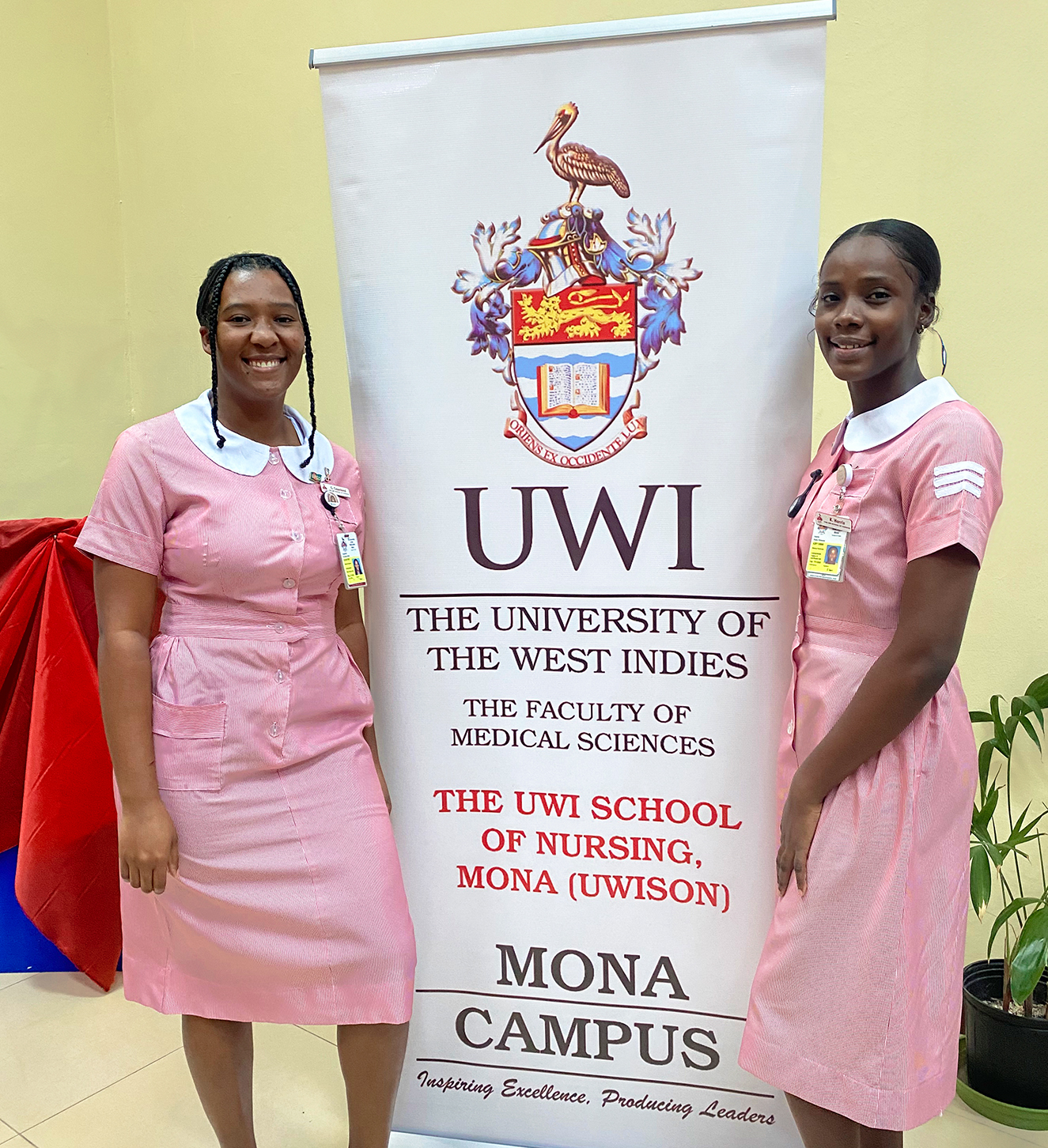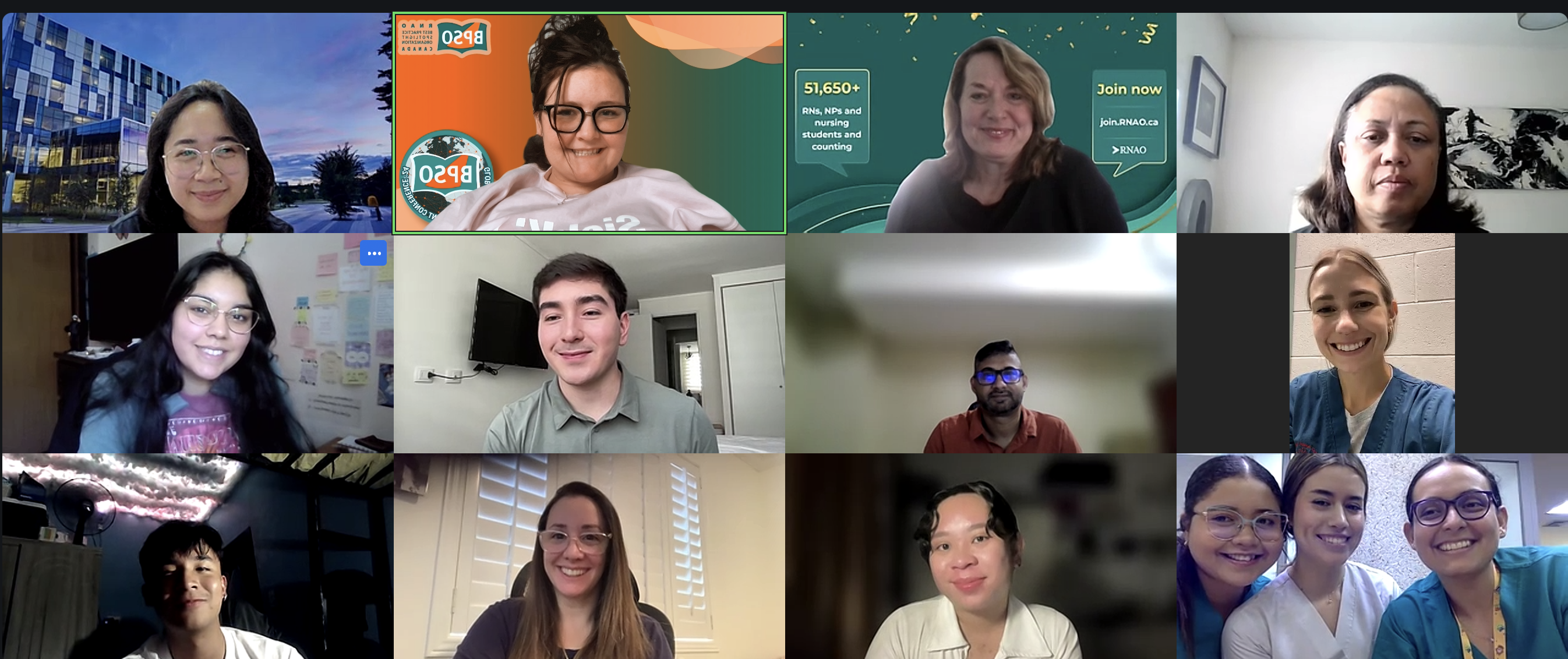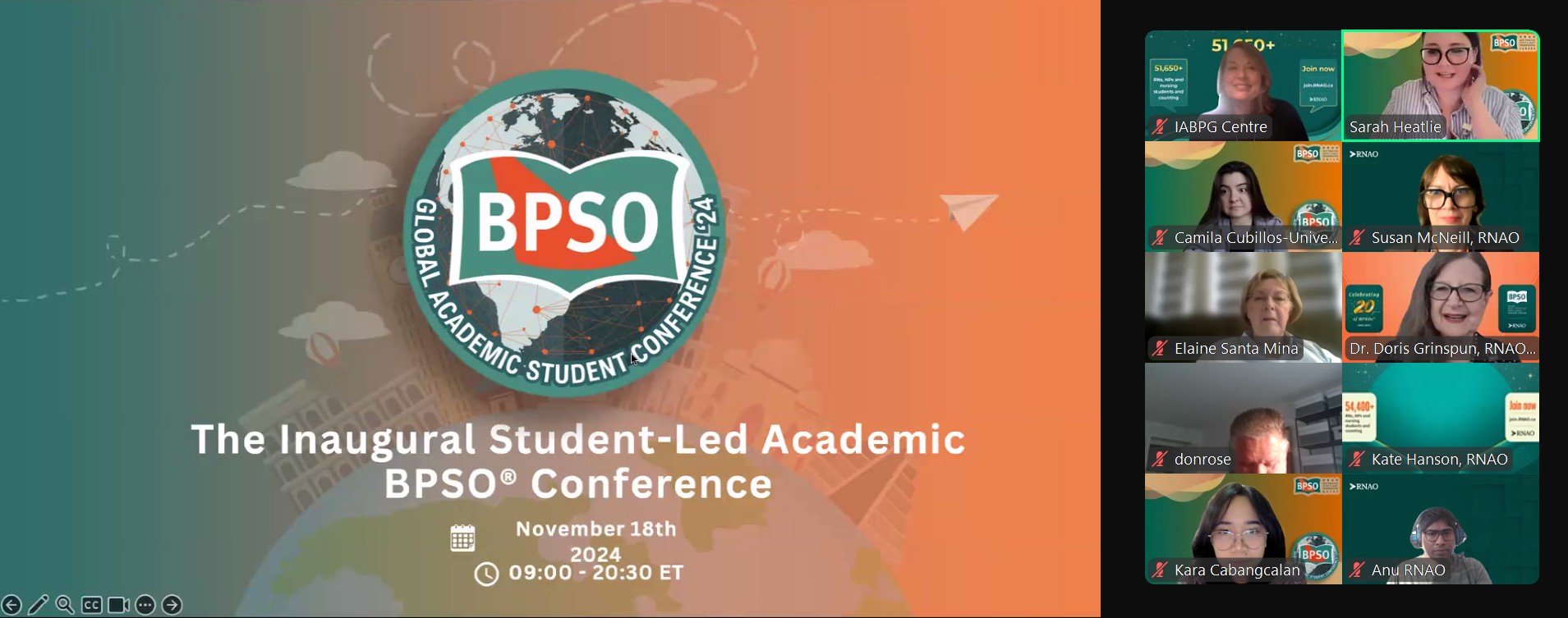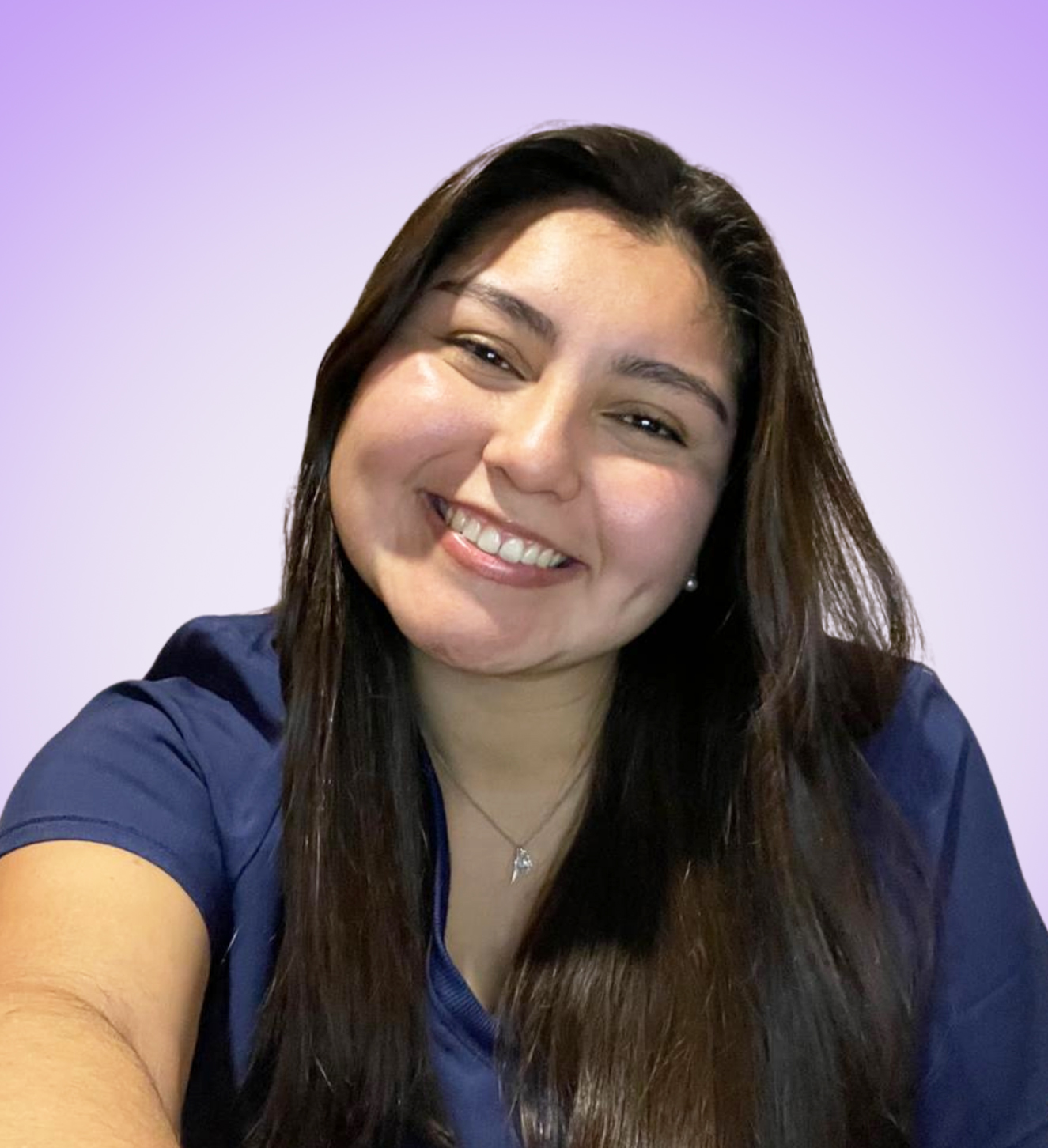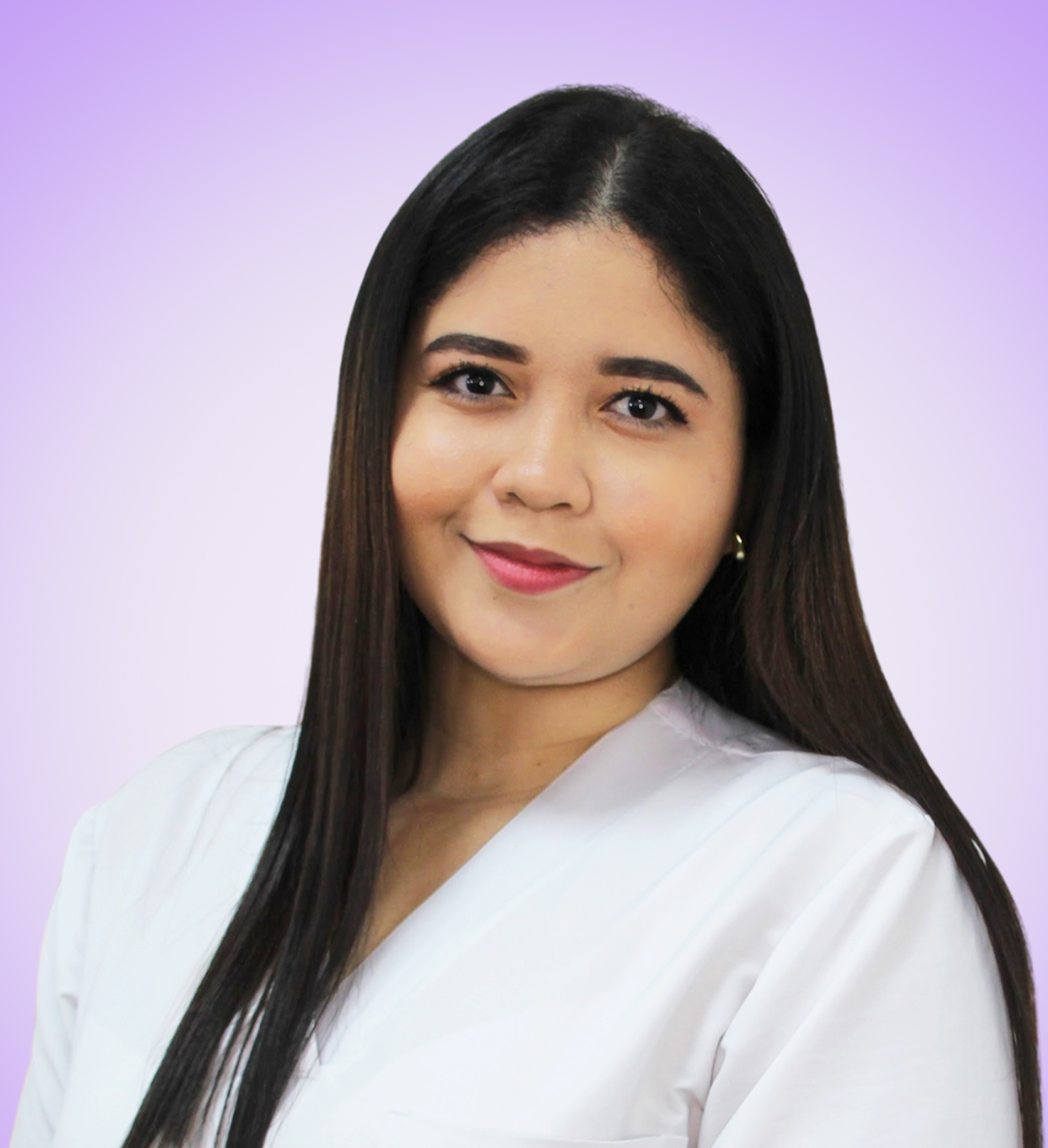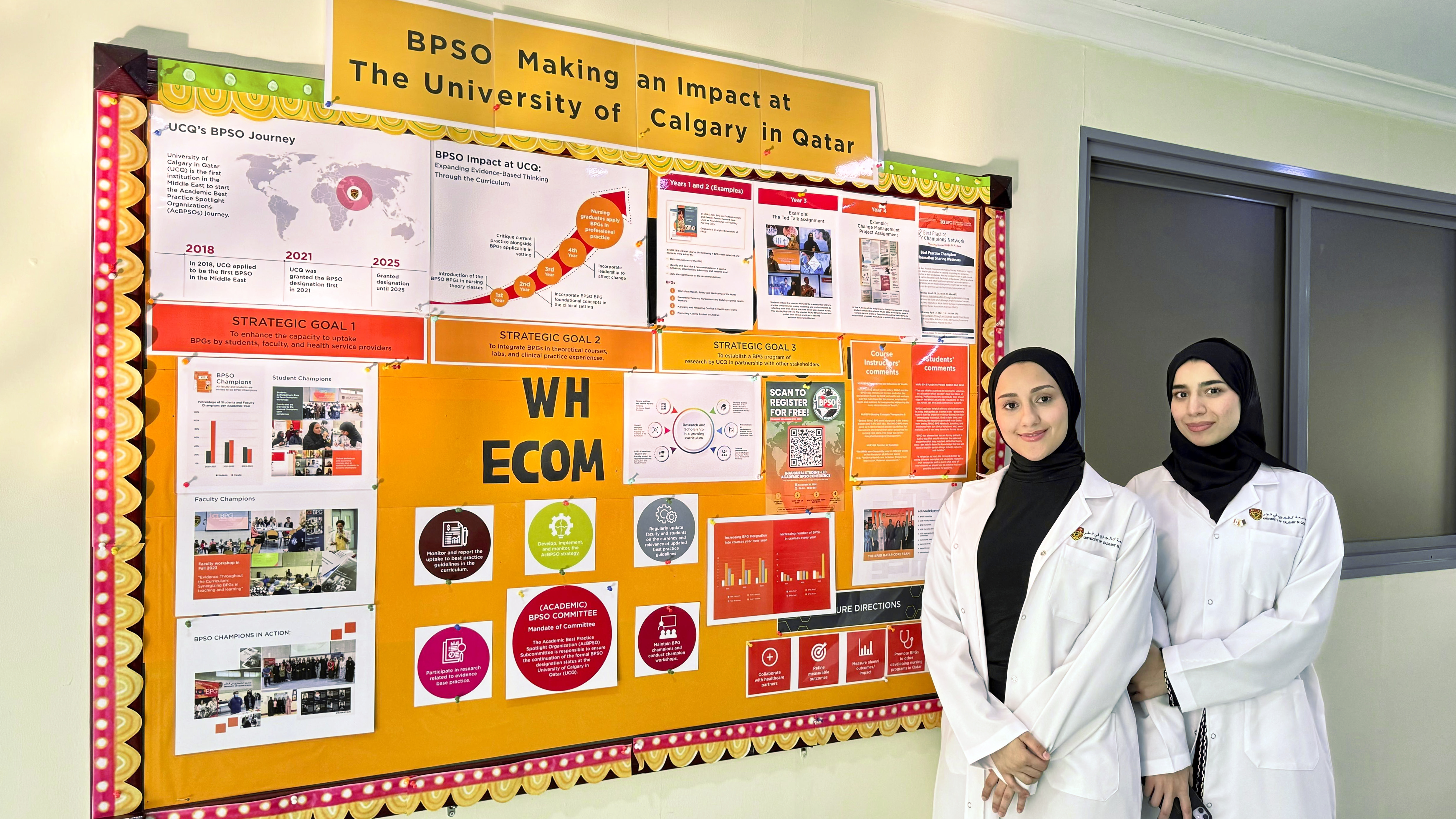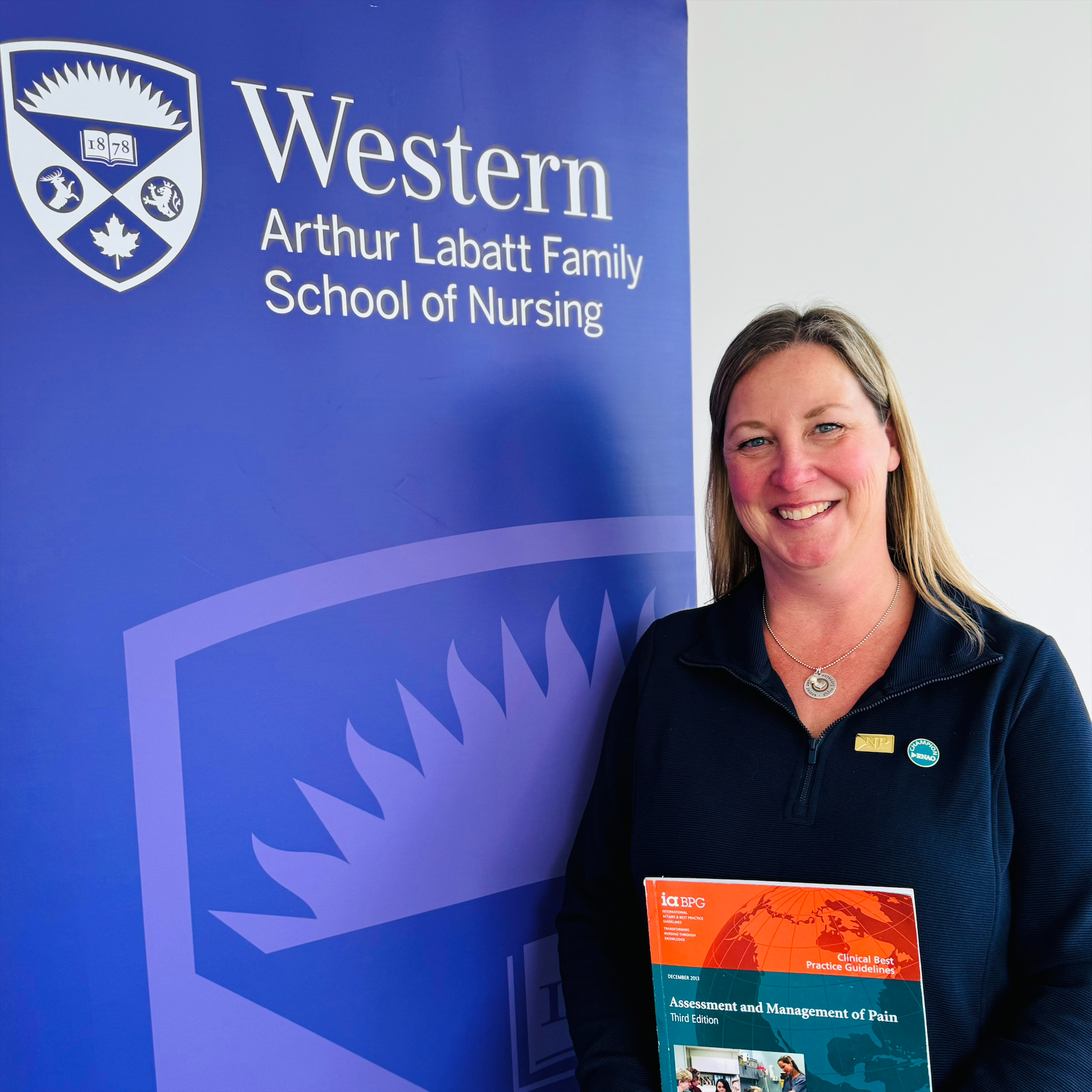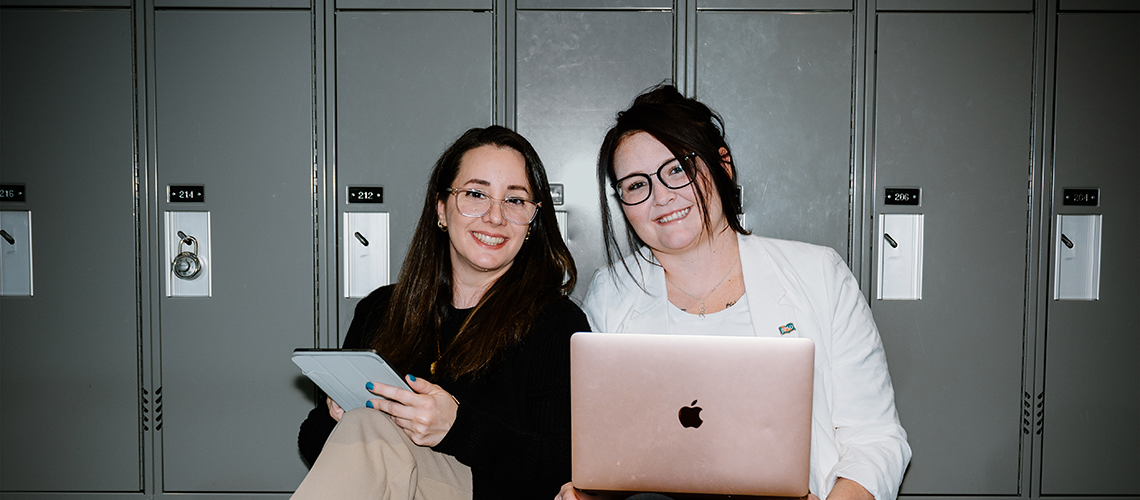
Fourth-year nursing student Cordelia Copeland was working on her presentation for the inaugural Student-Led Academic Best Practice Spotlight Organization® (BPSO®) Conference when Hurricane Beryl hit her home in the coastal community of St. Elizabeth, Jamaica. The Category 5 hurricane left her community without electricity in July 2024. Yet, Copeland still managed to meet her deadlines.
“Working on the conference was very difficult during that time,” the University of West Indies’ School of Nursing student recalls. “However, knowing the importance…especially because it’s student-led and we’re representing our school and country, gave me that drive to still work on it.”
Copeland partnered with fellow student Kelia Harris on a presentation about cultural safety in the context of their experiences in Jamaica. Their school/program, an academic BPSO in Kingston, Jamaica, is implementing multiple RNAO best practice guidelines (BPG) into the nursing curriculum. For their presentation, Copeland and Harris studied the Embracing Cultural Diversity in Health Care: Developing Cultural Competence BPG.
Fortunately, Harris’ home in the centre of Jamaica wasn’t hit by the hurricane, but she was without electricity and water for two weeks. Like Copeland, she didn’t let that hinder her progress. “I asked someone to take my (electronic) devices to a factory to get charged so I could finish my… work,” she says, noting “(the research) took our minds off of what was going on around us.”
The topic of cultural safety stood out for them because Jamaica has a diverse population. Harris says to provide compassionate care, nurses “have to take other peoples’ cultures and their beliefs into consideration.”
Cultural safety in a global context was one of four themes at the conference, which took place virtually on Nov. 18, 2024, and saw more than 300 registrants. The other themes focused on leadership roles, understanding and applying BPGs, and the principles of person-centred care. The event’s 20-member planning committee included students from Canada, Chile, China, Colombia, Jamaica, Philippines and Qatar.
To steer this work, Sarah Heatlie, a nursing student in Toronto Metropolitan University’s (TMU) post-diploma bridging program, served as conference chair. TMU is an academic BPSO, and Heatlie says she was approached by one of her professors about being involved. She saw it as a great opportunity to learn about leadership and connect with other nursing students.
“I cannot be (prouder) of the relationships we’ve built and of this amazing project that is unlike anything I’ve done before,” Heatlie shares.
She says a vital part when planning this conference was making it as accessible as possible for students through free registration, language translation services and an agenda that accommodates multiple time zones. “I think that really speaks to…equity, diversity and inclusion,” she says. Run by students, for students across the world, they wanted to ensure everyone felt included and had the opportunity to really learn something new.
To alleviate language barriers, Heatlie worked closely with the conference’s translation specialist, Tabhata Lazzara, who is also in her final year of TMU’s bridging program. “I think being accessible in terms of openness, cultures and languages provides an open door for everybody to be free to express themselves and give anecdotes that can help us for future conferences,” says Lazzara, whose mother tongue is Spanish.
More educational settings need to get involved with BPGs to solidify nursing practice, she adds. “The more we unify our efforts, the better it will be for us as a profession and the better the outcomes will be for patients. Being able to get students to understand this from the get-go is much better than later on.”
Lazzara’s hope for wider BPG implementation in academic settings is one she shares with others, at home and abroad.
In Latin America, fifth-year nursing students Daniela Cerda Bravo and María Teresa Herrera Vásquez, at Chile’s Universidad Diego Portales and Colombia’s Universidad Autónoma de Bucaramanga, respectively, are best practice champions at their schools, which are both academic BPSOs (read about the rapid uptake of BPGs in Spanish-speaking countries in the Spring-Summer 2024 issue of RNJ).
Since she recently entered a hospital practice setting, Cerda Bravo says she’s in a unique position to realize the importance of applying BPGs in her practice. She admits that when she initially read BPGs in her first semester of nursing school, she didn’t recognize their value and impact. “Now that I’m actually interacting with patients, I see the value it brings to me as a professional,” she says. BPGs are “a tool that have been created to stay for the long run.”
The more we unify our efforts, the better it will be for us as a profession and the better the outcomes will be for patients.
Likewise, Herrera Vásquez sees BPGs as an excellent resource for students. “It’s a reliable source of information that is backed up by evidence that students and practising nurses can rely on in their practice,” she says. “It can (also) provide you with the tools you need to become a leader in the nursing field and to participate effectively in the interdisciplinary group of health-care professionals when providing care for a patient.”
Cerda Bravo and Herrera Vásquez were also proud members of the conference’s planning committee.
“The student-led BPSO conference is an extremely important opportunity for everybody participating to be able to relate to others from different countries,” Cerda Bravo says. “It is opening the door for people to join together and see the nursing profession from different cultural points of view and move the profession forward.”
Herrera Vásquez says she didn’t realize nursing could be so broad in terms of its applicability. In advance of the event, she was most excited to learn how students apply knowledge based on their beliefs and culture.
Alaa Daloul and Safiya Mir are also fourth-year nursing students and best practice champions. They attend the University of Calgary in Qatar, an academic BPSO, and co-developed an abstract that was selected for the conference, titled Empowering Tomorrow's Nurses: The Impact of Best Practice Guidelines on Nursing Student Success. Although they both acknowledge not seeing the full value of BPGs when they first encountered them in school, they recognize their importance now that they’ve begun their clinical setting rotations. In fact, they regularly consult the BPGs to provide quality care.
“When I face challenges in the clinical field, I feel the only reliable resource I can turn to at any time is the BPGs,” Daloul shares. Without an instructor by her side for guidance when she enters the workforce, Daloul says she is reassured she can always access the BPGs. Even when “…looking for guidance on how to regain confidence… (or) how I can act if I encounter conflict. It’s not just about clinical skills…it’s also about…leadership skills…That’s why we wrote this abstract and joined the conference: we want to encourage other students as well to use the BPGs.”
As a nursing student, I can have leadership qualities. This realization didn’t just come from my experience with clinical rotation or theoretical knowledge in university, but also from the use of BPGs.
Mir says their presentation highlighted how leadership skills and qualities aren’t exclusive to individuals in higher positions, such as nurse managers or charge nurses. “As a nursing student, I can have leadership qualities. This realization didn’t just come from my experience with clinical rotation or theoretical knowledge in university, but also from the use of BPGs,” she explains. “I don’t think that in these four years, we as nursing students will learn everything about leadership…(but) using BPGs (and) encouraging everyone to use them will help us in the future with how to react, respond and deal, whether it’s with patient education, skills, or how to set and be in a healthy work environment.”
“Today we are nursing students, but tomorrow we’ll be nurses, and the BPGs will guide us,” Daloul adds.
Back in Ontario, Western University’s Arthur Labatt Family School of Nursing began its BPSO pre-designate journey in April 2024, alongside Confederation College and 15 other health organizations. NP Amy Horton, associate director and BPSO lead, says the university immediately applied to become a BPSO after RNAO CEO Dr. Doris Grinspun visited the campus.
“It’s very interesting from an academic lens,” Horton says about the BPSO process. “We want to graduate students who are leaders…so understanding BPGs and using them to help identify areas in their practice that can be improved and then going through that change process and impacting patient outcomes is what’s most exciting to me about it.”
Horton says Western will be implementing the Person- and Family-Centred Care, Transitions in Care and Services and Assessment and Management of Pain BPGs into its curriculum. Although the formal BPSO partnership and expectations are new to the university, it has used BPGs in its curriculum for many years. Horton says many students signed up to join the BPSO steering committee.
“As an academic institution, everything we do is for our students’ learning,” Horton says. “It’s always nice to have students involved and at the table because they bring such a unique lens…They also are helpful in letting educators know what would be meaningful for their learning.”
Looking ahead, Heatlie is hopeful for more student-led BPSO conferences and ongoing BPG implementation in academia. She says the planning committee has created a roadmap for future students to continue to build and improve the conference next year and beyond.
“With an international movement like the BPGs, it’s something we can share with colleagues around the world to drive care to the absolute best standard,” Heatlie says. “If it’s a (nursing) program driven by BPGs, you know what you can expect in your education and you know what is expected of you.”
Academic BPSOs inspire one another, globally
RNAO has long recognized the importance of introducing nursing students to BPGs and has worked with 15 universities and colleges in 10 countries to integrate the guidelines into their nursing curriculum. To advance this work, an academic BPSO consortium was launched, bringing together BPSO leads from Canada, Chile, China, Colombia, Jamaica, Mexico, Philippines, Portugal, Qatar and Spain to propel their collective efforts for the next generation of nurses under the leadership of RNAO’s Harveer Punia and then-associate director Susan McNeill. Their meetings provide a forum for exchanging ideas about how to integrate BPGs into nursing curriculum, as well as provide support and facilitate collaborative activities.
Dr. Louela Manankil-Rankin, associate professor at Nipissing University’s School of Nursing, has been a member of the consortium since its inception in 2022. She says the group is currently working on developing academic indicators that will monitor and evaluate the extent to which BPG implementation is improving students’ knowledge of evidence-informed practice and culture. The indicators will measure and monitor the impact of BPG implementation in academic settings.
This work began with Dr. Amalia Silva Galleguillos (Universidad de Chile), Olga Lucía Gómez Díaz (Universidad Autónoma de Bucaramanga, Colombia) and Manankil-Rankin, in collaboration with RNAO’s research unit director, Dr. Shanoja Naik, and indicator developer/implementation scientist, Dr. Christina Medeiros.
Manankil-Rankin says the consortium encourages nursing students to become evidence-informed practitioners who use research in their practice. “That is the recipe for improving patient outcomes,” she explains. “Their whole identity as a nurse emerges from the academic formation that they receive, so it’s very important how you lay the groundwork and framework by which students learn and develop capacities.”
Once the academic indicators are fleshed out and finalized, the consortium will work to identify standardized approaches for gathering information to monitor the progress of integrating the evidence-based practice in nursing curriculum.
The consortium’s work is important because it propels and inspires the nursing profession in the present to “change the future of health care across the world,” Gómez Díaz says. This is “mediated by an international curriculum” that promotes best practices.
There is a “synergy” between members of the consortium, Silva Galleguillos says. “What I expect most from the consortium’s work is solid and enriching interaction(s) where we share knowledge (and) experiences…to achieve the objectives set and also to generate new ideas and perspectives within the academic field,” she shares.
Echoing these sentiments, Manankil-Rankin says she also enjoys learning from her global BPSO colleagues in the consortium: “You only know what you know, so hearing different experiences opens up your window of looking at what you do critically.”
Note: Quotes from María Teresa Herrera Vásquez and Daniela Cerda Bravo have been translated from Spanish by Tabhata Lazzara. Quotes from Dr. Amalia Silva Galleguillos and Olga Lucía Gómez Díaz have been translated from Spanish by RNAO.

